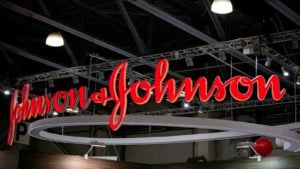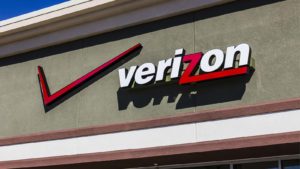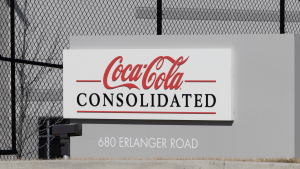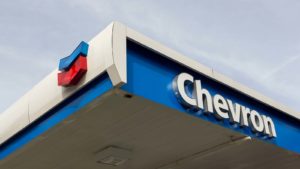From the first one’s resilient sales growth to the second’s cautious yet optimistic financial outlook and the third’s strategic acquisitions, these companies demonstrate diverse approaches to maintaining shareholder value.
With the fourth one’s operational efficiency and the sixth one’s adaptability in diverse markets, alongside the seventh’s focus on future growth amidst industry fluctuations, this article unveils the strategies behind these blue-chip stocks‘ consistent dividend payouts. Lastly, it offers insights into their resilience, financial stability, and focus on returns.
Procter & Gamble (PG)

Procter & Gamble’s (NYSE:PG) robust dividend performance is a fundamental factor that appeals to income-oriented investors. With a dividend yield of 2.49% and an annual payout of $3.76, P&G has maintained an impressive track record of dividend growth for 67 consecutive years (as of fiscal Q1 2024).
At the top-line level, Procter & Gamble demonstrated impressive growth in the first quarter, recording a 7% increase in organic sales. Despite facing declining volume outside Greater China, the company achieved robust sales growth across its 10 product categories. Home care, personal healthcare, feminine care, oral care, fabric care, hair care, grooming, baby care, family care, skin care, and personal care all experienced varying degrees of organic sales growth, indicating a diversified product portfolio.
Finally, Procter & Gamble emphasizes strategic investments aimed at driving sustainable growth. The company focuses on various strategic areas, including innovation, brand communication, retail execution, and value across different price tiers. Lastly, investments in supply chain 3.0, digital acumen, environmental sustainability, and the employee value equation are pivotal for long-term dividend growth and sustainability.
Altria (MO)

Altria (NYSE:MO) has established an exceptional record of maintaining and growing dividends for 53 consecutive years (as of Q3 2023). The dividend yield (forward) of 9.46% and an annual payout (forward) of $3.92 serve as attractive propositions for income-seeking investors.
This consistency in dividend growth demonstrates Altria’s ability to generate substantial profits from its operations. Also, it indicates the company’s ability to sustain and increase shareholder returns.
Furthermore, Altria provided a financial outlook for adjusted diluted earnings per share. It is anticipating a growth rate of 1.5% to 3% from the previous year, suggesting a cautious yet optimistic trajectory. The narrowed guidance range indicates predictability and confidence in the company’s performance outlook.
This guidance gives investors a clearer perspective on the company’s expected financial performance. Lastly, it indicates management’s prudent approach toward managing expectations and delivering sustainable dividend growth.
United Parcel Service (UPS)

United Parcel Service (NYSE:UPS) has a solid record of consistent dividend payments. The company’s 14-year uninterrupted dividend growth suggests financial stability and a focus on rewarding shareholders. As of Q3 2023, the forward dividend yield stands at 4.33%, an attractive figure for income-seeking investors.
Additionally, the payout ratio stands at 64.25%, a healthy balance between returning profits to shareholders and retaining earnings for operational and growth purposes. Similarly, the 5-year dividend growth rate of 12.23% proves United Parcel Service’s ability to consistently increase its dividends over time.
United Parcel Service’s strategy involves acquisitions to bolster its capabilities. The acquisitions of Bomi and MNX Global Logistics in healthcare logistics and the recent agreement to acquire Happy Returns for simplifying returns represent United Parcel Service’s focus on innovating its service offerings. Therefore, the company’s targeted healthcare and return logistics expansion aligns with the market’s evolving needs.
Johnson & Johnson (JNJ)

Johnson & Johnson’s (NYSE:JNJ) history of consistently increasing dividends for 61 consecutive years (as of Q3 2023) highlights its payout stability. Dividend payments are critical for income-oriented investors, indicating the company’s ability to generate consistent cash flows. The dividend yield of 3.15% represents an attractive return for investors. The payout ratio of 44.23% indicates that Johnson & Johnson is utilizing less than half of its earnings to distribute dividends to shareholders.
Additionally, Johnson & Johnson’s efforts toward operational efficiency and margin improvement were evident in its financial performance. The company achieved a 14.1% increase in adjusted net earnings and a substantial 19.3% rise in adjusted diluted earnings per share year-over-year.
Finally, noteworthy margin improvements were observed in the Innovative Medicine segment, where margins increased from 41.4% to 45.4%. This improvement resulted from a favorable patient mix and prioritization of the strategic research and development portfolio.
Verizon (VZ)

With a dividend yield of 7.12% and a consistent dividend growth streak of 19 years (as of Q3 2023), Verizon (NYSE:VZ) portrays a robust focus on rewarding shareholders. This high dividend yield is attractive to income-focused investors seeking consistent returns. Verizon’s payout ratio of 54.41% reflects a balanced dividend distribution of its earnings.
To support the payouts, the company witnessed a commendable 3.9% year-over-year growth in wireless service revenue. This growth is pivotal, as wireless service revenue is crucial to overall revenue and profitability. The resulting adjusted EBITDA of $12.2 billion (up 0.2% year-over-year) for the quarter indicates operational efficiency and effective revenue management.
Despite economic uncertainties, Verizon remains on track to meet its 2023 financial guidance. Finally, its ability to generate $14.6 billion in free cash flow year-to-date €”surpassing the entire free cash flow of the previous year, underlines its robust financial performance to support dividend sustainability.
Coca-Cola (KO)

Coca-Cola’s (NYSE:KO) forward dividend yield of 3.15% showcases its focus on providing consistent returns to shareholders. The payout ratio of 68.68% indicates a balanced approach to distributing profits as dividends while retaining earnings for growth and reinvestment. Notably, the annual payout of $1.84, with its impressive track record of 60 years of consecutive dividend growth (as of Q3 2023), represents the company’s confidence in future cash flows.
Fundamentally, Coca-Cola’s ability to achieve 11% organic revenue growth in the quarter demonstrates its adaptability and resilience in various market conditions. Consistent volume growth of 2% underscores sustained consumer demand for its beverages, showing the strength of its product portfolio and market presence. Also, the success in gaining both volume and value share across diverse markets such as ASEAN, the South Pacific, Japan, and Latin America highlights the effectiveness of Coca-Cola’s market strategies.
Finally, these initiatives involve product innovation, pricing strategies, partnerships, and targeted marketing campaigns tailored to specific regions, contributing to the company’s market penetration and value growth.
Chevron (CVX)

Chevron’s (NYSE:CVX) dividend policy is a hallmark of its financial stability. The dividend yield (forward) of 4.18% and an annual payout (forward) of $6.04 exhibit robust distributions. The payout ratio of 43.21% indicates that the company distributes less than half of its earnings as dividends, leaving room for future growth and reinvestment in the business.
Additionally, Chevron’s remarkable streak of 36 consecutive years of dividend growth (as of Q3 2023) showcases its ability to generate consistent profits despite industry fluctuations. Chevron remains optimistic about substantial production growth once FGP reaches full capacity, projecting over 1 million barrels of oil equivalent per day in 2025.
Looking forward, the revised estimates for 2025 free cash flow from TCO, expected to be more than $4 billion at $60 Brent, are slightly down from prior estimates. However, the company ensures these major projects’ safe and reliable commissioning and start-up.
Finally, despite restrictions on the pending transaction with Hess (NYSE:HES), Chevron remains committed to returning value to shareholders through share repurchases. Also, the planned repurchase of around $3 billion in Q4 indicates long-term prospects.
On the date of publication, Yiannis Zourmpanos did not hold (either directly or indirectly) any positions in the securities mentioned in this article. The opinions expressed in this article are those of the writer, subject to the InvestorPlace.com Publishing Guidelines.
Yiannis Zourmpanos is the founder of Yiazou Capital Research, a stock-market research platform designed to elevate the due diligence process through in-depth business analysis.
